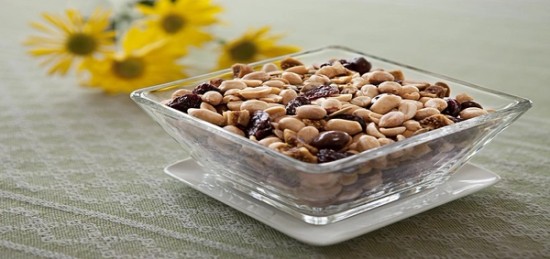Fight Hunger and Feel Fuller Longer with Powerful Nutrition
- Managing weight is a multifaceted challenge, but maintaining flavor is an important part of success.
- Peanuts and peanut butter have been shown to help increase satiety, which may help you lose weight and keep it off.
The Over-Weight of the Nation
According to the Centers for Disease Control and Prevention, one out of three American adults is obese, as are 17% of children (CDC, 2012). Weight control methods come in many forms: capsules, shakes, bars. Almost all of these methods will work…for a while. Wouldn’t it be nice if there were something that would help control hunger that came in a natural package? And wouldn’t it be nice if science supported its claims? Look no further than America’s favorite nut: the peanut. As part of a nutritious and balanced diet, with fewer calories, peanuts and peanut butter can be part of a lifestyle to help you reach a healthy weight.
For a time, while fat was the enemy, the public was advised to avoid nuts because of their fat content. Thankfully, good research has changed that recommendation and Americans are also changing their focus. Peanuts are the “total package” when it comes to providing protein, mostly good fats, fiber and more than 30 essential vitamins and minerals.
Recent interest in the role of “good fats” in the battle against heart disease has uncovered significant benefits in the nutrient composition of peanuts including a potential link to weight control (Sabate, 2003). While the mechanism is under investigation, experts and health advocacy groups such as the American Heart Association and the Academy of Nutrition and Dietetics (formerly American Dietetic Association) have included peanuts in their recommendations for healthful eating.
Peanuts and Weight Control Connection
A growing body of science is looking at the biological mechanisms and behavioral factors of nut consumption tied with weight control and potential weight loss:
- Research shows that women who eat nuts have lower Body Mass Indexes (BMIs) than women who do not eat nuts (Hu, 1998).
- Researchers support the idea that peanuts provide satiety due to their high fat, fiber and protein content which leads to a decrease intake of calories from other foods. (Alper, 2002).
- One study found that after eating peanuts, subjects had an increase in resting energy expenditure even though physical activity did not increase. (Alper, 2002)
- A Harvard supervised weight loss study showed that a moderate-fat diet, which included several nuts and peanut butter, resulted in greater and more sustained weight loss than similar subjects on a low-fat diet (McManus, 2001). In addition, patients on the nut and peanut butter diet which included vegetables were more likely to remain compliant at 18 months.
As research shows that fat, fiber and protein promote a feeling of fullness, health professionals can feel comfortable recommending that clients replace less nutritious habitual foods with peanuts and peanut butter. This switch may enhance weight loss efforts and long-term compliance with healthy lifestyle recommendations.
The Serving Scale
1 oz peanuts = small handful = 40 peanuts
2 tablespoons peanut butter
References
- Centers for Disease Control and Prevention. Overweight and Obesity: Facts. Available at http://www.cdc.gov/obesity/data/facts.html. Accessed on October 15, 2012.
- Alper, C. (2002). Effects of chronic peanut consumption on energy balance and hedonics. International Journal of Obesity Related Metabolic Disorders, 26, 1129-37.
- The American Dietetic Association (2002). The Glycemic Index: What Is it? www.eatright.org.
- Drake, V. (2009). Glycemic Index and Glycemic Load. http://lpi.oregonstate.edu/infocenter.
- Hu, F. (1998). Frequent nut consumption and risk of coronary heart disease in women: prospective cohort study. BMJ, 317, 1341-1345.
- Liu, S (2002). Dietary glycemic load and atherothrombotic risk. Current Atherosclerosis Reports, 454-461.
- Ludwig, D. (2002). The Glycemic Index: Physiological Mechanisms Relating to Obesity, Diabetes, and Cardiovascular Disease. Journal of the American Medical Association, 2414-2423.
- Ludwig, D. (2003). Dietary glycemic index and the regulation of body weight. Lipids, 117-121.
- McManus, K. (2001). A randomized controlled trial of a moderate-fat, low-energy diet compared with a low-fat, low-energy diet for weight loss in overweight adults. International Journal of Obesity Related Metabolic Disorders, 1503-11.
- Sabate, J. (2003). Nut consumption and body weight. American Journal of Clinical Nutrition, 78 (Supplement), 647S-50S.
- US Department of Agriculture, A. R. (2000). Continuing Survey of Food Intake by Individuals CSFII 1994-96.
